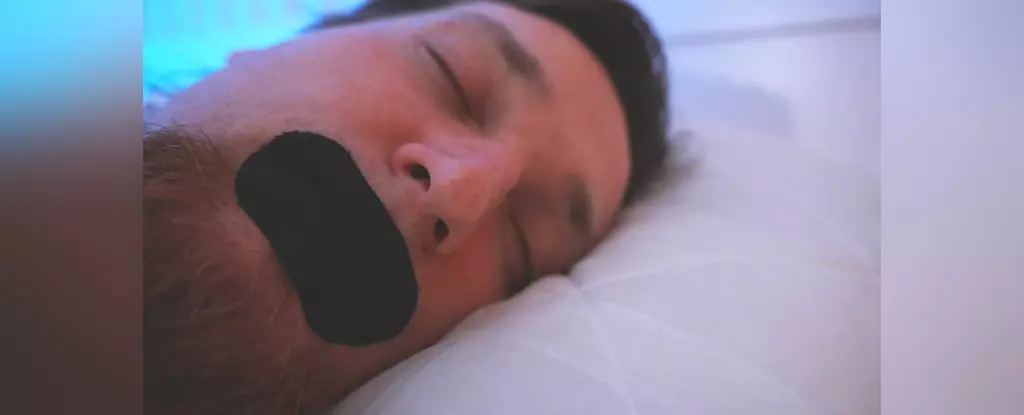In today’s fast-paced digital age, where solutions to life’s challenges can be reduced to a mere TikTok clip, the trend of mouth taping as a sleep remedy stands out—not for its efficacy, but for how dangerously misleading it can be. Over the past few months, countless influencers have rallied behind this peculiar nighttime ritual, suggesting that a simple piece of tape could rectify complex sleep issues like obstructive sleep apnea, jaw posture, and even improve energy levels. This unfounded notion, while appealing in its simplicity, is a perfect example of how social media can co-opt medical advice without grounding it in rigorous science.
In an era when self-care routines often overshadow expert opinions, mouth taping trends draw an alarming picture of the modern dilemma: the battle between genuine healthcare solutions and the allure of simplistic fixes that are anything but safe. An online rabbit hole promises swift solutions for chronic issues, but reality tells a different story.
The Science Says No
A closer examination reveals that the scientific backing for mouth taping is alarmingly frail. Numerous studies have investigated the effects of this approach on patients suffering from obstructive sleep apnea and other related conditions. Initially, a superficial reading of these studies might suggest some improvements in certain mild cases. However, it doesn’t take much digging to uncover a stark conclusion: most research highlighting mouth taping’s benefits lacks the rigor and depth necessary to be considered informative.
Many of these studies suffer from inherent weaknesses; they include small and non-representative sample sizes, failure to follow up with participants, and a lack of comprehensive adjustment for confounding factors. Bottom line? They don’t present a reliable picture of effectiveness. With most scientific evaluations pointing toward the absence of substantial and reproducible evidence in support of mouth taping, it is imperative to question any claims made by its advocates. When it comes to healthcare, blind faith in fleeting trends is both irresponsible and potentially hazardous.
Risks and Misguided Solutions
The dangers associated with mouth taping, especially for individuals who may not necessarily have mild cases of obstructive sleep apnea, cannot be overstated. For many, mouth breathing stems from underlying issues—nasal obstructions such as a deviated septum, chronic sinus infections, or other anatomical irregularities. Taping one’s mouth shut, in these scenarios, can prove perilous. It poses risks of asphyxiation and can delay necessary medical intervention that addresses root causes.
By pushing individuals towards a superficial solution rather than professional medical treatments, mouth taping trends potentially worsen existing health conditions. Patients desperately seeking relief may end up being misled by viral videos that commodify medical advice. The reality is that a temporary fix, such as a piece of tape, can stand in the way of necessary diagnostic and therapeutic procedures.
The Importance of Expert Guidance
What should be clear to any thoughtful observer is that addressing sleep disorders is not something to be taken lightly. While social media suggests quick-and-easy solutions, medical conditions including sleep apnea require thorough evaluations and personalized treatment plans designed by licensed healthcare professionals. Those suffering from unmanageable sleeping issues should prioritize a visit to the doctor over following the lure of internet trends.
Unfortunately, the demand for simplicity in addressing complex issues often leads people into bewildering paths. It’s critical to recognize that while mouth taping may appear tempting, it operates in stark contrast with the complexities of real-life health problems. In essence, it’s a dangerous distraction from necessary medical care that could genuinely enhance one’s quality of life.
In a world where health information is at our fingertips, it’s vital to filter out noise from genuine healthcare advice. Mouth taping offers a loosely constructed promise of improved sleep, but the reality is far less rosy. Slapping on tape while you sleep may be simple, but it’s an example of how misinformation can quickly turn into a hazardous practice, risking individuals’ well-being in the process.


Leave a Reply